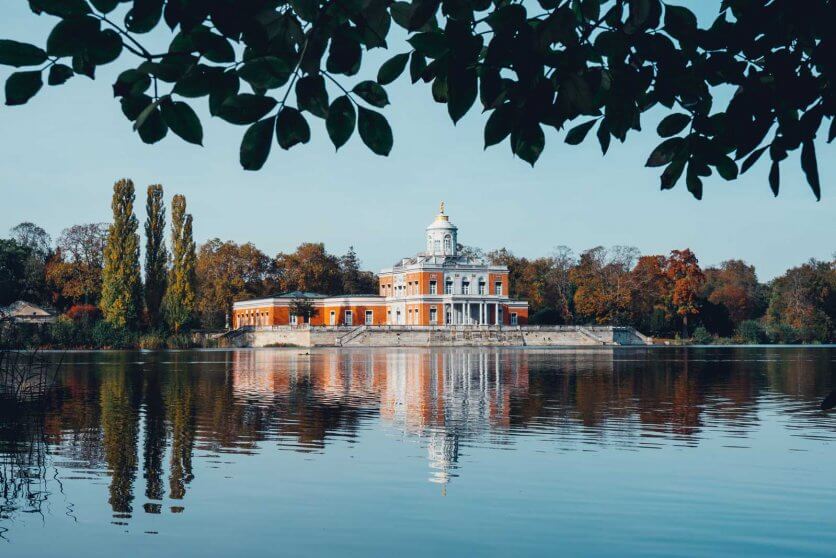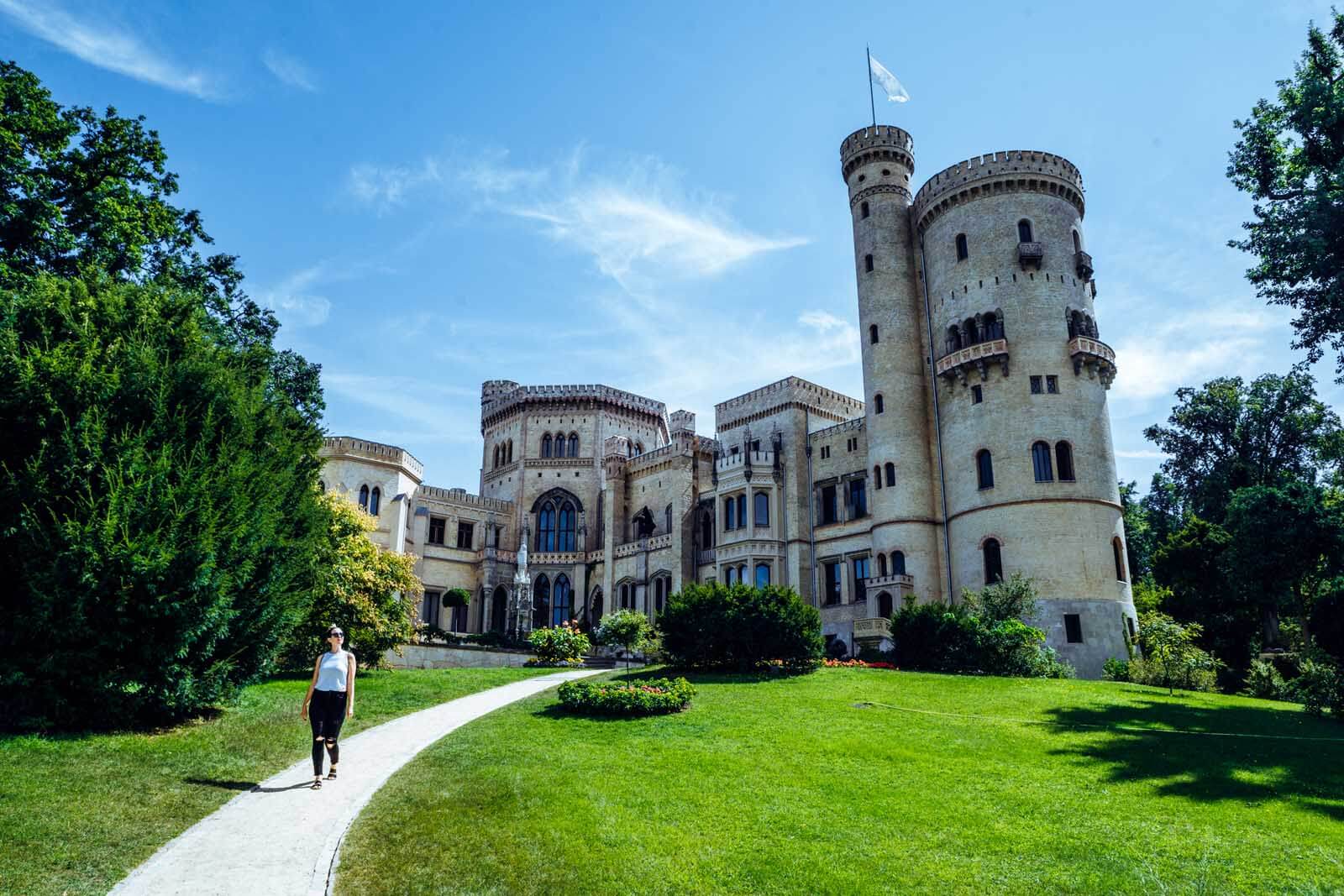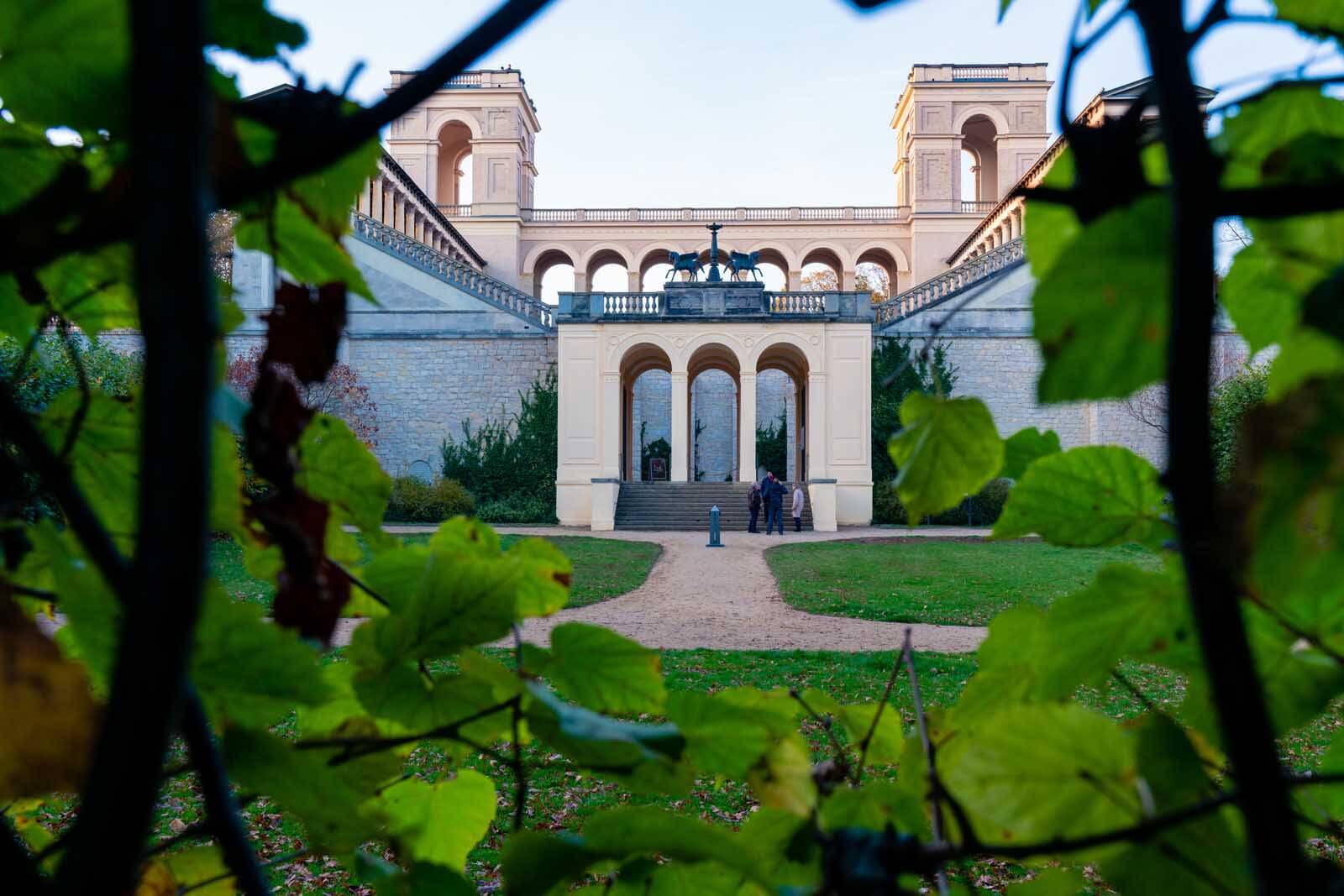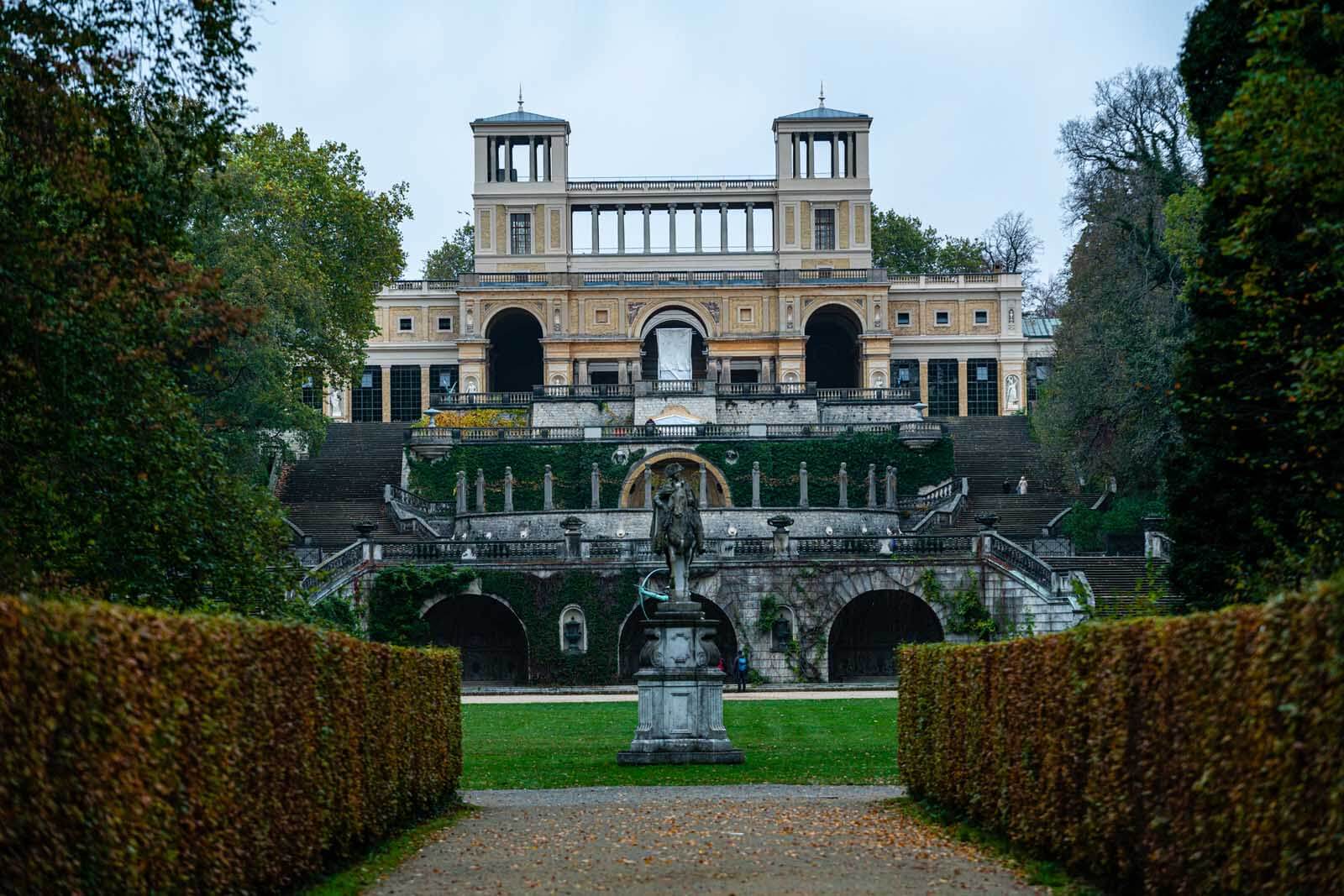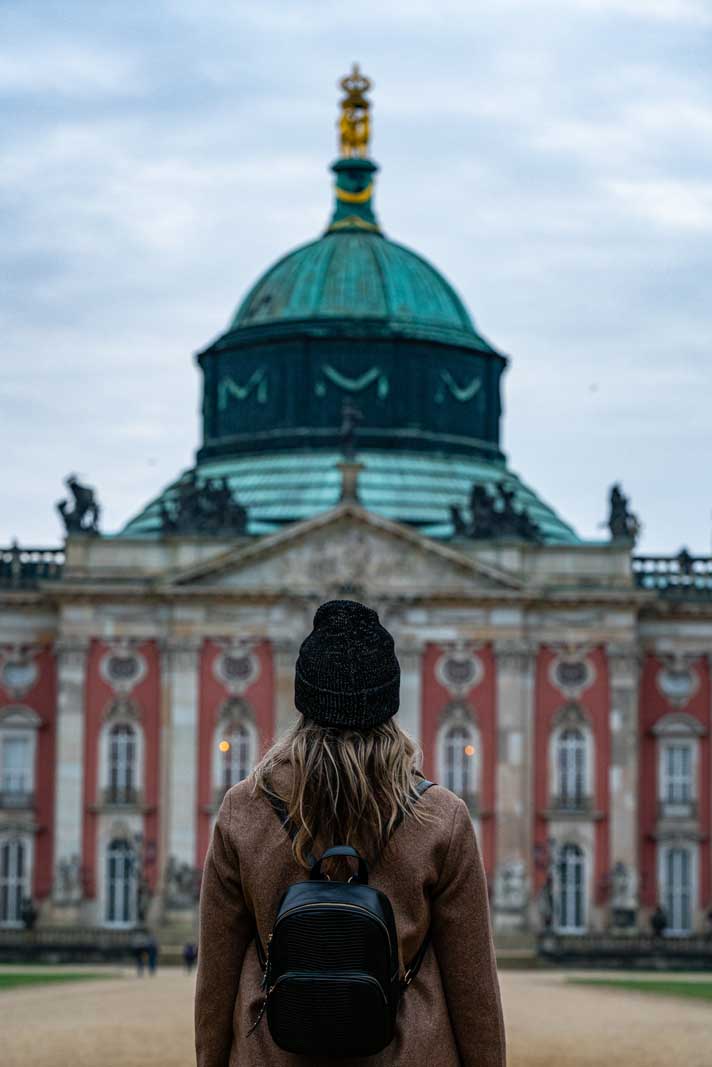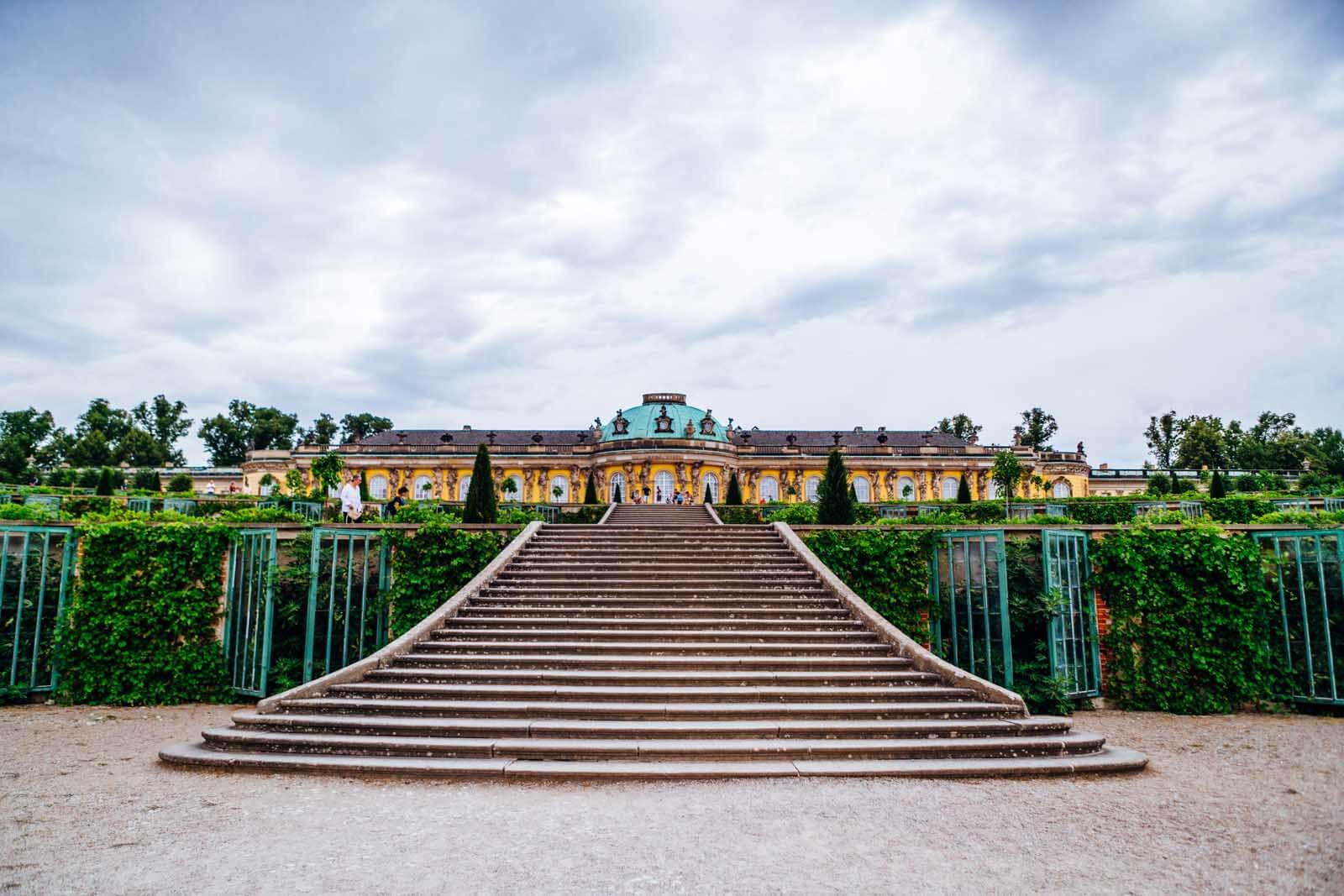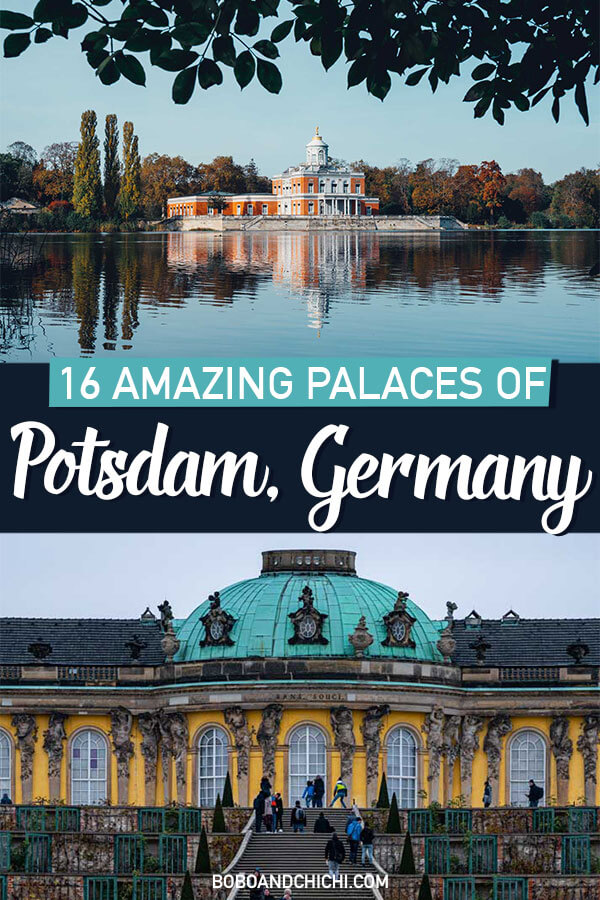Did you know there are 16 palaces in Potsdam that make up the Palaces and Parks of Potsdam and the UNESCO World Heritage cultural landscape? Potsdam, Germany is located roughly 30 km from Berlin and is one of the most beautiful destinations to visit in Germany rich with Prussian palaces and history as well events during and after World War II under the communist rule and during the German Democratic Republic under the Soviet rule.
There are many things to do in Potsdam, Germany that attract more than two million visitors a year. The highlight of this destination though are the palaces and parks that make up Potsdam and have crowned it’s 16 palaces a place on the UNESCO World Heritage list.
The most famous and notable of the places include the ornate Sanssouci Palace and Park which houses many of the palaces in Potsdam on this list as well as the grand and enormous New Palace and Cecilienhof Palace that was used for the Potsdam Conference in 1945.
The palaces in Potsdam date back to the 17th century under the Prussian empire it became a sanctuary of palaces and parks designed in styles influenced from all over the world including Greece, Paris, Rome, and Tudor England for the Prussian kings to escape Berlin to rest and relax as summer residences, retirement, and to be a place without worry.
Visitors to Potsdam can enjoy biking or walking to most of the palaces and parks which are free to roam around. To enjoy the interiors of the palaces you will have to join a tour or pay admission. We recommend checking the season of your visit to see which palaces are available for tours as some are only open during the summer peak tourist season while others are open year-round.
Potsdam is a great place to take a day trip from Berlin or what we prefer is spending a few days as its impossible to experience the full beauty and all there is to see and do in Potsdam in just a day. Once you learn more about these Potsdam palaces you might agree, see more itineraries to help you plan your trip.
Potsdam Palaces to See
Babelsberg Palace
One of the most beautiful palaces in Potsdam is undoubtedly Babelsberg Palace located in Babelsberg Park overlooking the Glienicke Brücke, aka the Bridge of Spies and Havel River. Built by Prince Wilhelm in 1833 for a summer residence he would use for over 50 years in an English Tudor style with architect Karl Friedrich Schinkel who went on to be the King of Prussia.
Admire the different mosaics, terraces, sculptures, fountains, and gardens surrounding Babelsberg Palace Potsdam.
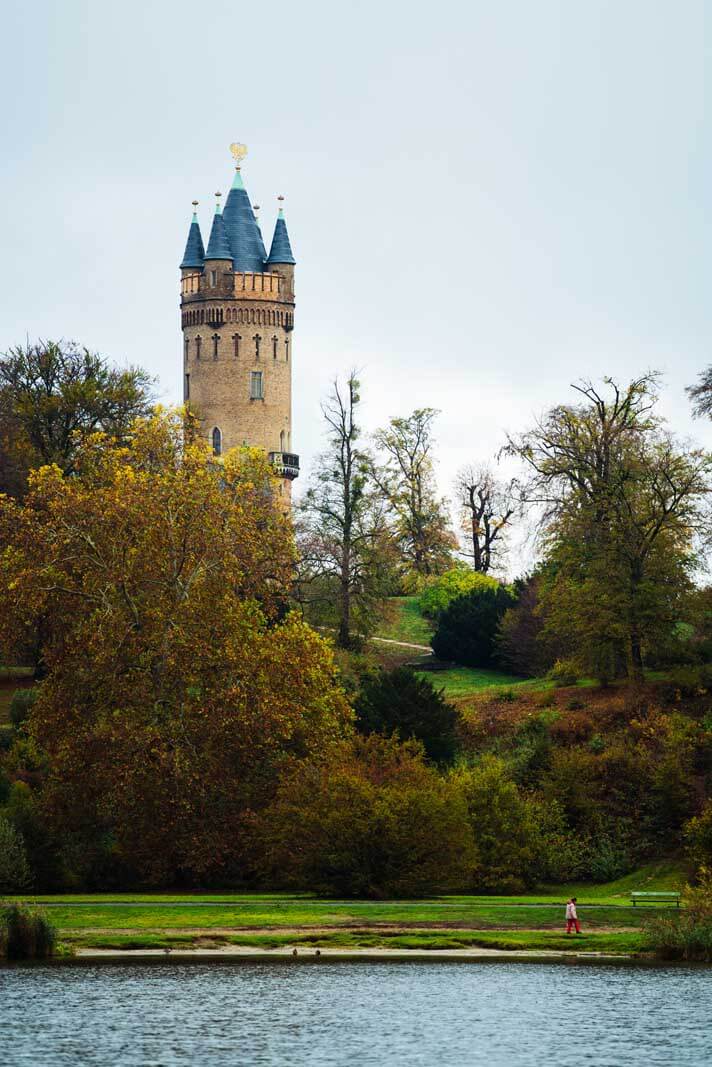
Normally you can visit inside the palace, but as of our most recent visit in November 2019, this Potsdam palace is under restoration until further notice.
Belvedere Pfingstberg
Located in the New Garden in Potsdam, this palace is unique as it has an incredible story of how it came to be restored. Commissioned by Prussian King Friedrich Wilhelm IV, construction began in 1847.
While this isn’t really like the other Potsdam palaces, this was built as a hilltop viewing platform for visitors of King Friedrich Wilhelm IV.
The two towers are designed in the Italian Renaissance style and was meant to be much more elaborate and ornate than the structure built today, which is hard to imagine. Construction came to a halt in 1852 until 1860.
The King had passed away and it was the persistence of his wife to get his brother to continue construction which finally began again but at a much smaller scale of what King Friedrich Wilhelm IV had originally envisioned.
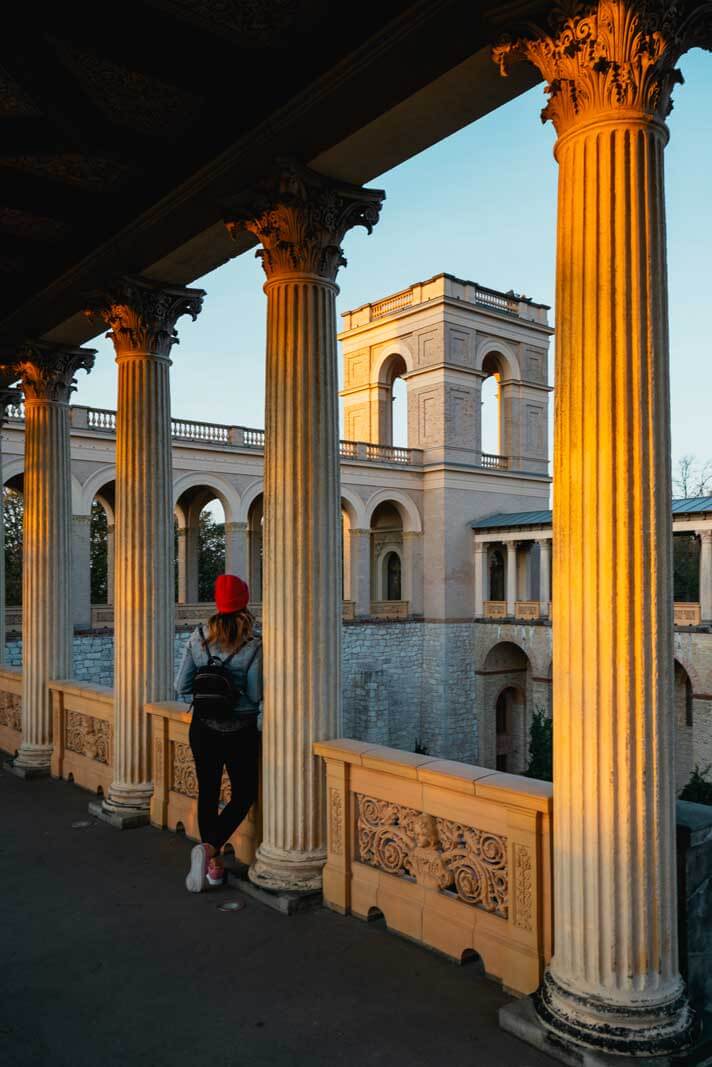
It wasn’t until a group of locals in 1988 who took it upon themselves to see that this structure wasn’t lost forever as it was already in ruins. Between 1988 and 2005 the group orchestrated an almost full restoration of the Belvedere Pfingstberg.
The Belvedere Pfingstberg Palace in Potsdam is open to the public for tours and offers some of the most incredible panoramic views from Potsdam from its observation towers.
Belvedere Klausberg
One of the many Potsdam palaces on this list located in grand and enormous Sanssouci Park. The Belvedere Klausberg was erected by Frederick the Great after the completion of the opulent New Palace of Potsdam. The Belvedere Klausberg was just a single part in a bigger plan by Frederick the Great for the beautification of Sanssouci Park.
This was the first Belvedere in Potsdam completed in 1772 and constructed as a viewing platform and the design was inspired by Emperor Nero’s palace from Rome.
There was significant destruction and even a fire during World War II that caused terrible damage to the structure.
The structure gutted by fire during the final days of World War II was restored as a contribution to Germany’s Reunification. The Belvedere’s exterior and interior were largely repaired and restored, returning its Upper Hall, with its stucco marble, reconstructed ceiling painting in the dome and the oak parquet floor, to its former grandeur.
Most of the two-story rotunda structure has been restored since the damage from the end of World War II in 1945. One of the only areas that still remain unrepaired is the lower room.
Don’t miss the vaulted ceiling in the dome that’s adorned with 20 divinities sculptures out of sandstone.
Cecilienhof Palace
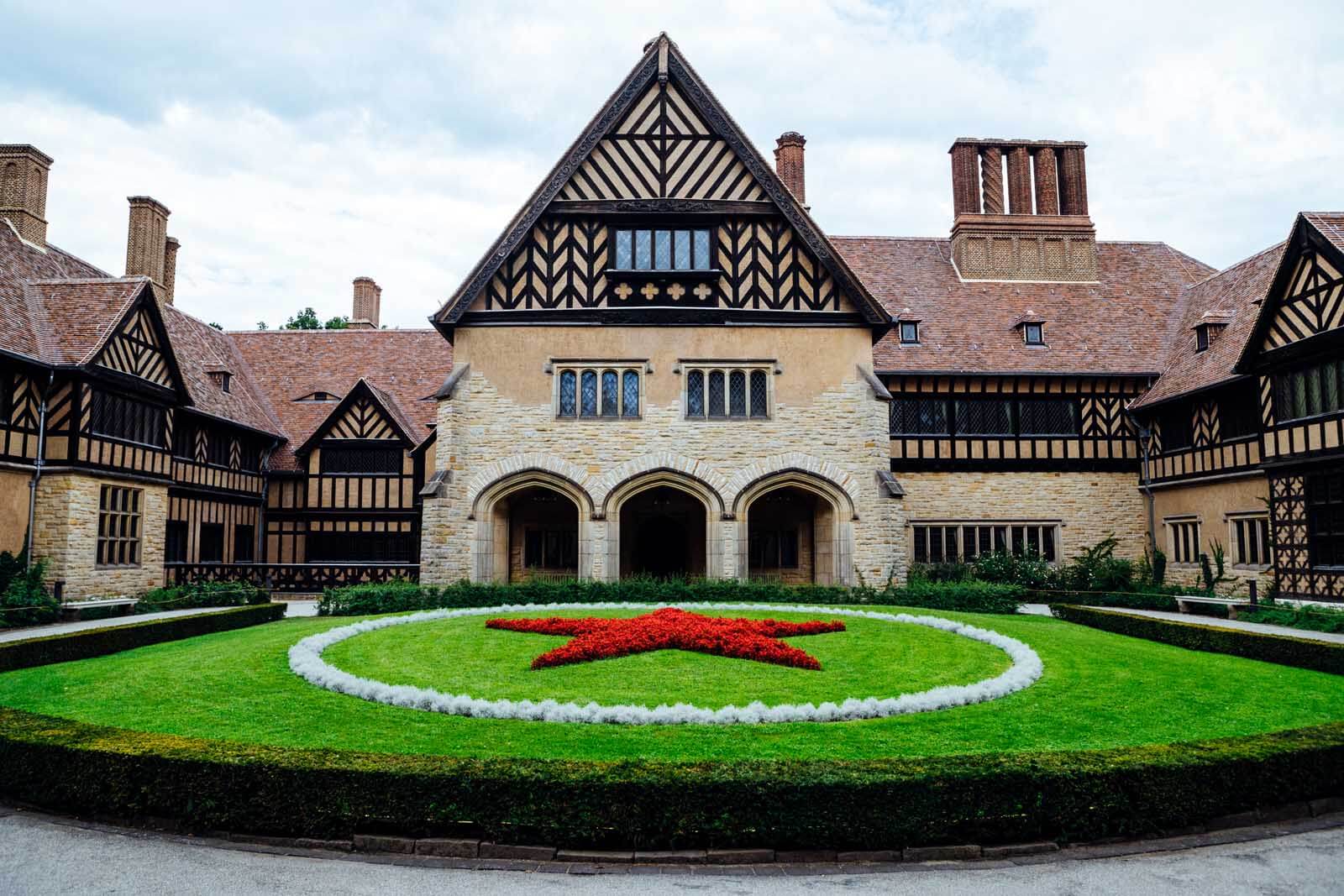
Crown Prince Wilhelm and his wife supported the rise of Hitler’s power and Hitler himself visited Cecilienhof Palace on three different occasions. There wasn’t a happy ending to Wilhelm’s support of Hitler, he ended up being used by the Nazi regime which ended with Wilhelm and Cecilie being forced to leave their home in 1945.
However, the most notable piece of history that Cecilienhof Palace in Potsdam is known for is actually being the location of the post WWII conference of the “Big Three,” where the three heads of state of the USSR (Stalin), USA (Truman), and UK (Churchill) met to negotiate the ending terms of World War II and decide what the new borders of Europe would be after the war.
The Potsdam Conference, as it was referred to, was held between July 17th and August 2nd of 1945. This was the third, final, and longest summit between the Big Three.
At the time, Cecilienhof Palace was located within the Soviet military zone and was organized mostly by the Soviets, hence the flowers with the Soviet red star at the entranceway of the palace even to today, who would later continue to run their KGB headquarters just steps away from where the conference took place during the GDR.
There are daily historical and educational tours of Cecilienhof Palace in Potsdam that you can join. After your tour inside this Potsdam palace, you can also explore the grounds and visit the old orangery and the Dairy in the garden as well as make your way to Glienicker Brücke, or the Bridge of Spies which is also nearby.
The year 2020 will be the 75th anniversary of the Potsdam Conference if you’re planning a trip during this time be sure to see the special exhibition in Cecilienhof Palace to remember this historic event.
Charlottenhof Palace in Sanssouci Park
Another royal palace in Potsdam located in the Sanssouci Park is Charlottenhof Palace built as the summer residence for Crown Prince Friederick Wilhelm gifted to him by his father as a Christmas present in 1825 who would later go on to be King Friedrick Wilhelm IV of Prussia.
This modestly sized Neoclassical-style palace was inspired by Roman villas both inside and out and considered as the heart of Prussian Arcadia.
This Potsdam palace is open to the public but in order to see the interior, you must join a guided tour.
Orangery Palace
Surprise, another Potsdam palace on our list that’s located in Sanssouci Park. The Orangery Palace, which is also known as the New Orangery on the Klausberg, was built by King Friedrich Wilhelm IV and completed in 1864 after 13 years of construction.
This was the final palace built in Sanssouci Park the Orangery Palace was built on what was called the “Road of Triumph” leading up to the Belvedere on Klausberg, one of our palaces in Potsdam mentioned already.
Complete with sculptures, fountains, arcades, terraces, and plant halls this palace showcases King Friedrich Wilhelm IV’s deep admiration of Italy.
In the winter, the Orangery Palace stores frost-sensitive plants in its plant halls. Not to be missed is the Raphael Hall which has a collection of over 50 pieces of 19th-century work by Raphael including some of his most famous works.
Visiting the Orangery Palace in Potsdam can be tricky as it has weird hours and days of operation per season. It’s best to check in advance before your visit.
The palace is closed in the winter between November through March reopening in April on the weekends only. During peak tourist season from May to October the palace is open for visitors daily except for Mondays and you’re required to take a guided tour most days.
Marble Palace
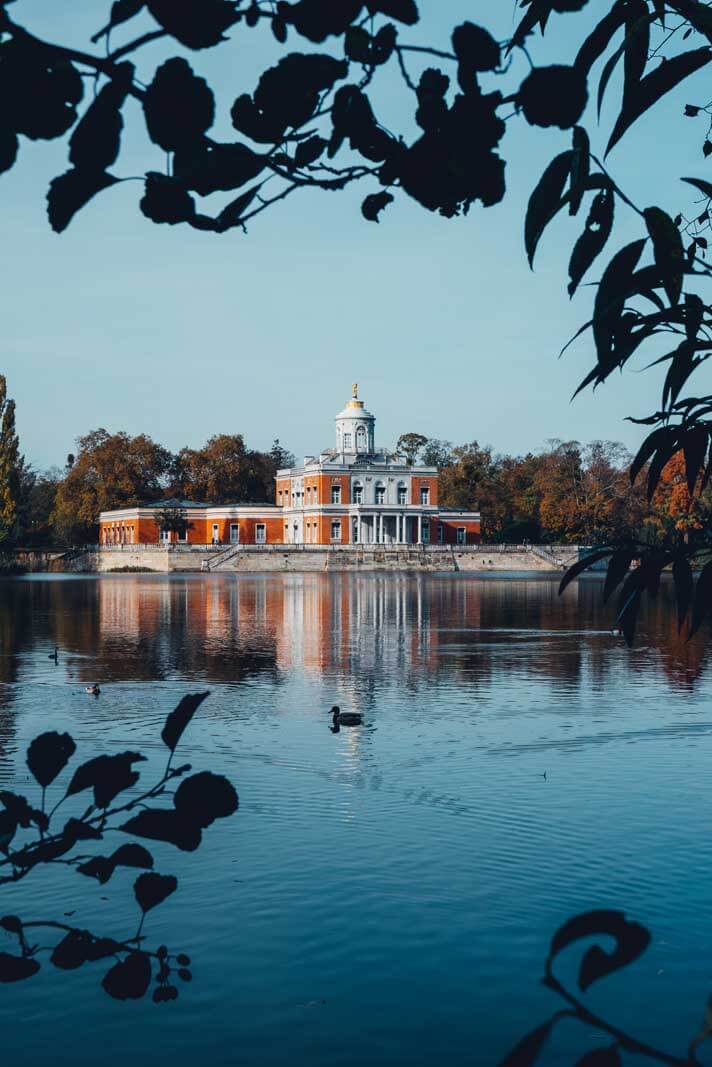
This Neoclassical palace in Potsdam was commissioned by Frederick William II of Prussia as a summer residence between 1787 and 1793. During the communist rule the palace was a part of the “Forbidden City” in East Germany under the Soviet rule and by 1961 it was turned into a military museum.
Ten years later the museum moved to Dresden and today it is open to the public for touring where you can find the original character in the house to be preserved for viewing.
New Palace
The New Palace Potsdam is the largest and most impressive of all the palaces in Potsdam in our opinion. Located in Sanssouci Park the New Palace Potsdam is considered to be the last great Prussian baroque palace in existence.
Built between 1763 – 1768 under Frederick the Great built this palace to flex the strength and power of the Prussian power. The New Palace is lavish and quite a contrast to Sanssouci Palace also located in Sanssouci Park in size alone. The New Palace has over 200 rooms, 3 large wings, the Rococo Schlosstheater, and the roof alone has nearly 300 sculptures.
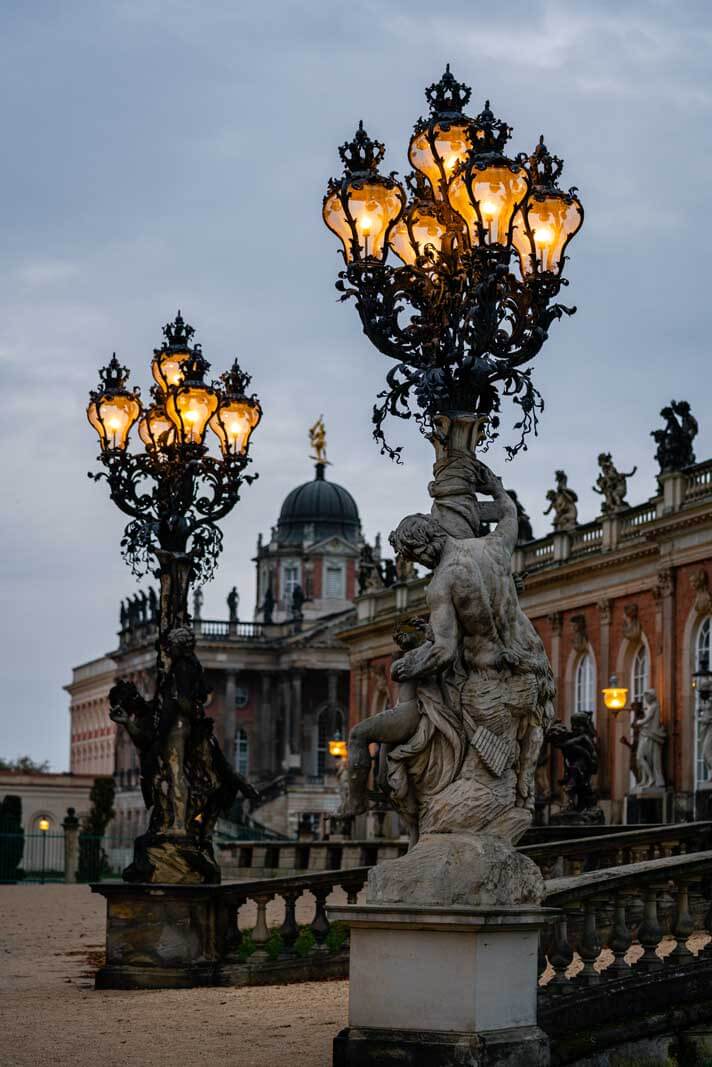
You can tour the palace on Mondays – Wednesdays. The hours of operation change per season so be sure to check before your visit.
Sanssouci Palace
Easily the most famous of the palaces in Potsdam’s Sanssouci Park is Sanssouci Palace. Often referred to as the German Versailles, Sanssouci Palace is one of the most visited and photographed palaces in Potsdam.
While Sanssouci Palace is much smaller than France’s Palace of Versailles, with around a dozen rooms, Sansoucci Palace doesn’t lack in beauty. Completed in Rococo style, you can oooh and ahh over the gorgeous exterior and interior of the palace. One of the most notable features of Sanssouci Palace is the layered terraces of stairs and gardens reaching up to the house from the grand fountain.
Designed to be used as Frederick the Great’s summer Palace and a place for him to relax which the name of Sanssouci Palace directly translates to without worry. Sanssouci Palace was said to be the favorite of all the palaces in Potsdam for the Prussian monarchy and royal family until the fall of their empire in 1918.
Frederick the Great loved Sanssouci Palace so much that he wanted to be buried there. His remains weren’t moved to Sanssouci Palace until 1991, but he did finally end up there and his gravesite is located on the highest terrace.
Even during the Iron Curtain after WWII, Sanssouci Palace was a tourist attraction. Today you can tour and visit the palace’s exterior and interior. As a matter of fact, more than two million people a year visit Sanssouci Palace making it the most popular palace in Potsdam to visit.
Sanssouci Palace is open daily for visitors except for Mondays.
Picture Gallery of Sanssouci
The Picture Gallery of Sanssouci is a part of the Sanssouci Palace complex and was designed and built to store and house Frederick the Great’s art collection. To this day, this is the oldest remaining royal museum in all of Germany.
The Picture Gallery is a separate building right next to Sanssouci Palace, while the exterior of the Picture Gallery seems a bit more humble compared to the elaborate designs and styles of the other Prussian palaces in Potsdam, the interior of the Picture Gallery is where this beauty shines.
Some famous works from artists like Caravaggio, van Dyck, and Rubens are on display here as well as collections of paintings from other Prussian palaces. Sadly, much of the original work that Frederick the Great had hanging in his picture gallery went missing during World War II and the Soviet Rule under the GDR.
Today you can visit during May – October every day except for Mondays and view the collection of over 140 paintings.
New Chambers of Sanssouci
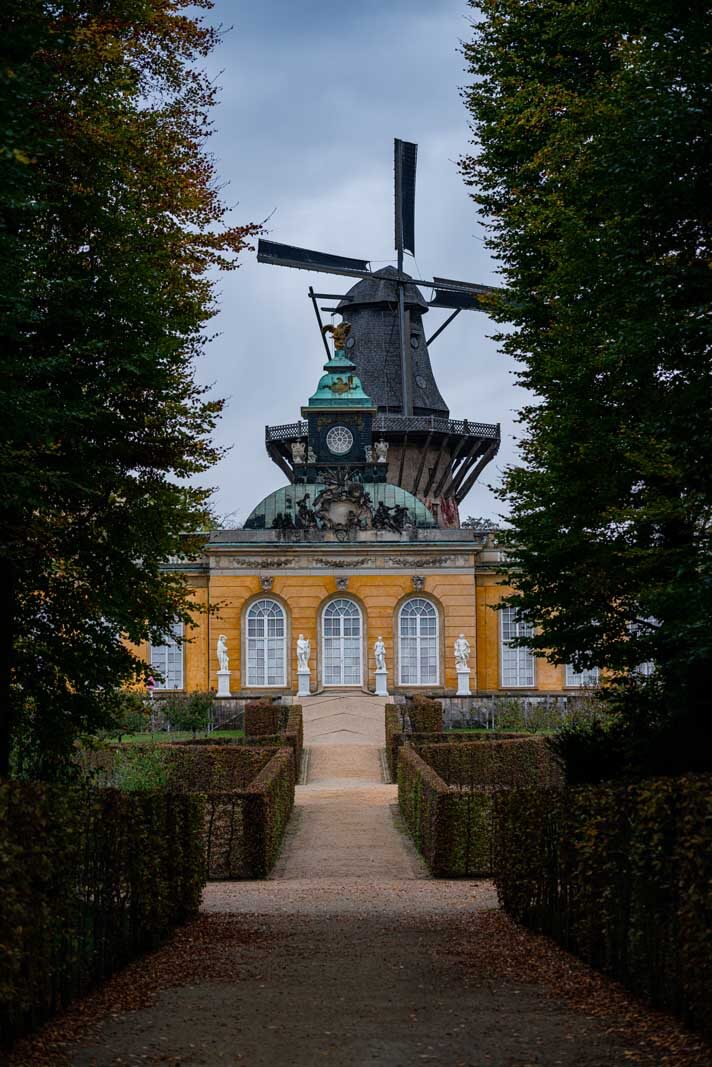
Completed in Rococo style, the rooms were ornamented with lavish gold features and were decorated beautifully for the closest guests of the King. Again, like the Picture Gallery of Sanssouci, the exterior is a bit unassuming as the interior is where you’ll find the majestic decorated and furnished rooms from floor to ceiling.
Visitors can tour the New Chambers of Sanssouci during the months of May through October on every day except for Mondays.
Sacrow Palace
One of the few Potsdam palaces that wasn’t built and designed by a Prussian King was the Sacrow Palace. This beautiful estate was purchased by King Frederick Wilhelm IV to help with his beautification project for the Potsdam garden landscape. The estate on the Havel River was converted into a palace.
The location of this Potsdam palace was located on the inside of the German border and faced severe damage and losses after World War II.
The Sacrow Palace has been renovated, despite its losses and is used as an event space with art exhibitions. There’s also a cafe located in the courtyard that’s a great place to have a meal or coffee with a nice view.
Stern Hunting Lodge
Another structure that is a part of the Potsdam palace collection is the laid back royal hunting lodge of Frederick William I. The Dutch style hunting lodge was used mainly for deer hunting and located along the forests of Potsdam.
Stern Hunting Lodge is pretty intact to its true and original character as it did not see much damage during or after WWII and was restored in 2011. The Stern Hunting Lodge is made up of the main lodge, a caretaker’s house, and stables.
Today the area around the Stern Hunting Lodge is used as a greenspace by the locals and during special events visitors are invited to go inside.
Lindstedt Palace
Another Potsdam palace that wasn’t originally built by a Prussian King. The Lindstedt Palace is located near Sanssouci Park, was originally a farmhouse. Frederick Wilhelm IV acquired the estate in 1828 and by 1859 the farm house was rebuilt as a palace.
This is Potsdam palace is more unique compared to the others architecturally as it was inspired and designed to look like a Roman villa as a retirement retreat for the monarch that never came to be. Frederick Wilhelm IV passed away in 1861 and the palace was in the hands of the House of Hohenzollern.
The palace’s plans to transform the land surrounding git into gardens didn’t come into fruition as originally planned. The palace ended up being occupied by the von Bülow and von Falkenhayn families. The daughter of von Falkenhayn who lived in the Lindstedt Palace went on to marry Henning von Tresckow who was one of the conspirators and masterminds behind an attempt to assassinate Hitler.
This palace in Potsdam today is used as a venue for various events and can be rented out. There are also guided tours of the palace and the ground available for visitors as well.
Marquardt Palace
One of the last palaces in Potsdam is the Marquardt Palace, located in an old March village along the waters of the Schlänitzsee lake and the Sacrow-Paretzer canal.
This palace was home to Rudolph von Bischoffwerder, a retired general and close friend of King Frederick Wilhelm II in 1795.
The palace was a residence until 1932 when the Kempinski Hotel Company would rent the space and palace for events that became popular to attend among Berliners.
Visiting today you may notice that the Marquardt Palace is more of a modern looking building compared to the other palaces in Potsdam. The grounds are now used as a venue for various occasions from weddings to corporate retreats and often used for film and photography.
The park is open to the public to visit but to visit inside the palace you need to rent out the space or be invited to an event being held in the space.
Golm Palace
The final palace in Potsdam is Golm Palace located onGroßer Zernsee lake surrounded by beauty and nature. Today the palace is a hotel and restaurant open only for the season of April through October on Thursdays through Sundays.
Enjoyed this post about the incredible palaces in Potsdam, Germany? Bookmark for later or share the love below on Pinterest.

